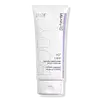What's inside
What's inside
 Key Ingredients
Key Ingredients

 Benefits
Benefits

 Concerns
Concerns

 Ingredients Side-by-side
Ingredients Side-by-side

Water
Skin ConditioningGlycolic Acid
BufferingPropylene Glycol
HumectantAmmonium Hydroxide
BufferingHydroxyethylcellulose
Emulsion StabilisingCholesterol
EmollientDimethicone
EmollientPetrolatum
EmollientPalmitic Acid
EmollientStearic Acid
CleansingMyristic Acid
CleansingGlyceryl Stearate
EmollientPEG-100 Stearate
PEG-40 Stearate
EmulsifyingIsopropyl Palmitate
EmollientCetyl Alcohol
EmollientSorbitan Stearate
EmulsifyingMagnesium Aluminum Silicate
AbsorbentStearamidopropyl Dimethylamine
EmulsifyingIsostearic Acid
CleansingTetrasodium EDTA
Water, Glycolic Acid, Propylene Glycol, Ammonium Hydroxide, Hydroxyethylcellulose, Cholesterol, Dimethicone, Petrolatum, Palmitic Acid, Stearic Acid, Myristic Acid, Glyceryl Stearate, PEG-100 Stearate, PEG-40 Stearate, Isopropyl Palmitate, Cetyl Alcohol, Sorbitan Stearate, Magnesium Aluminum Silicate, Stearamidopropyl Dimethylamine, Isostearic Acid, Tetrasodium EDTA
Water
Skin ConditioningAloe Barbadensis Leaf Juice
Skin ConditioningCaprylic/Capric Triglyceride
MaskingGlycerin
HumectantButyrospermum Parkii Butter
Skin ConditioningCetearyl Alcohol
EmollientLactic Acid
BufferingEthylhexyl Polyhydroxystearate
EmollientStearyl Alcohol
EmollientTrimethylolpropane Tricaprylate/Tricaprate
EmollientPropanediol
SolventCoconut Alkanes
EmollientSodium Hydroxide
BufferingGlycolic Acid
BufferingCitric Acid
BufferingGlyceryl Stearate
EmollientBis-Stearyl Dimethicone
EmollientMyristyl Nicotinate
Skin ConditioningMaltobionic Acid
BufferingDimethicone
EmollientSalinicoccus Lysate Filtrate
Skin ConditioningHelianthus Annuus Extract
EmollientOryza Sativa Bran Extract
Skin ConditioningCarapa Guaianensis Seed Oil
Skin ConditioningBisabolol
MaskingRosmarinus Officinalis Leaf Extract
AntimicrobialZingiber Officinale Root Extract
MaskingPolyacrylate Crosspolymer-6
Emulsion StabilisingPentylene Glycol
Skin ConditioningCoco-Caprylate/Caprate
EmollientPolysilicone-11
Tocopherol
AntioxidantCeteareth-20
CleansingCaprylhydroxamic Acid
Xanthan Gum
Emulsifying1,2-Hexanediol
Skin ConditioningParfum
MaskingPEG-40 Stearate
EmulsifyingT-Butyl Alcohol
PerfumingBenzyl Salicylate
PerfumingGeraniol
PerfumingLinalool
PerfumingWater, Aloe Barbadensis Leaf Juice, Caprylic/Capric Triglyceride, Glycerin, Butyrospermum Parkii Butter, Cetearyl Alcohol, Lactic Acid, Ethylhexyl Polyhydroxystearate, Stearyl Alcohol, Trimethylolpropane Tricaprylate/Tricaprate, Propanediol, Coconut Alkanes, Sodium Hydroxide, Glycolic Acid, Citric Acid, Glyceryl Stearate, Bis-Stearyl Dimethicone, Myristyl Nicotinate, Maltobionic Acid, Dimethicone, Salinicoccus Lysate Filtrate, Helianthus Annuus Extract, Oryza Sativa Bran Extract, Carapa Guaianensis Seed Oil, Bisabolol, Rosmarinus Officinalis Leaf Extract, Zingiber Officinale Root Extract, Polyacrylate Crosspolymer-6, Pentylene Glycol, Coco-Caprylate/Caprate, Polysilicone-11, Tocopherol, Ceteareth-20, Caprylhydroxamic Acid, Xanthan Gum, 1,2-Hexanediol, Parfum, PEG-40 Stearate, T-Butyl Alcohol, Benzyl Salicylate, Geraniol, Linalool
 Reviews
Reviews

Ingredients Explained
These ingredients are found in both products.
Ingredients higher up in an ingredient list are typically present in a larger amount.
Dimethicone is a type of synthetic silicone created from natural materials such as quartz.
What it does:
Dimethicone comes in different viscosities:
Depending on the viscosity, dimethicone has different properties.
Ingredients lists don't always show which type is used, so we recommend reaching out to the brand if you have questions about the viscosity.
This ingredient is unlikely to cause irritation because it does not get absorbed into skin. However, people with silicone allergies should be careful about using this ingredient.
Note: Dimethicone may contribute to pilling. This is because it is not oil or water soluble, so pilling may occur when layered with products. When mixed with heavy oils in a formula, the outcome is also quite greasy.
Learn more about DimethiconeGlyceryl Stearate is a mix of glycerin and stearic acid.
It is used to stabilize the mixing of water and oil ingredients. By preventing these ingredients from separating, it can help elongate shelf life. It can also help thicken the product's texture.
As an emollient, it helps soften skin and supports barrier-replenishing ingredients.
In cosmetics, Glyceryl Stearate is often made from vegetable oils or synthetically produced.
This ingredient may not be fungal-acne safe
Fun fact: The human body also creates Glyceryl Stearate naturally.
Learn more about Glyceryl StearateGlycolic Acid is arguably the most famous alpha hydroxy acid (AHA) with tons of research backing its benefits.
It is found naturally in sugar cane but the form used in skincare is usually synthetic for purity and stability.
Glycolic acid removes the top layer of dead skin cells to allow newer and fresher ones to emerge.
AHAs work by breaking down the structural “glue” that holds old skin cells in place. When that buildup is gone, your skin can renew itself more efficiently.
Research also shows glycolic acid stimulates collagen production, helping to firm and thicken the skin over time. This is one of its biggest advantages over other AHAs.
Overall, glycolic acid helps with:
Fun fact: Glycolic acid boosts skin hydration by helping it produce molecules that increase hyaluronic acid naturally.
To work best, glycolic acid products should have a pH between 3-4 (that’s where exfoliation is most effective but still gentle on skin).
The pH and concentration of a product are key to its effectiveness:
It is normal to feel a slight stinging sensation when using glycolic acid. This usually fades as your skin adjusts.
Because glycolic acid has the smallest molecular size in the AHA family, it can penetrate deeper, which enhances its effectiveness but also makes it more likely to irritate sensitive skin.
If your skin is very sensitive or prone to rosacea, glycolic acid may be too strong; in that case, try milder options like lactic acid or a PHA instead.
Recent studies suggest glycolic acid might even help protect against UV damage. But don’t skip sunscreen! Freshly exfoliated skin is more sensitive to the sun.
Glycolic acid is a skincare superstar. It smooths, brightens, hydrates, and firms the skin. Unless you’re highly sensitive, it’s well worth adding to your routine.
Read more about some other popular AHA's here:
Learn more about Glycolic AcidPeg-40 Stearate is a waxy solid made up of polyethylene glycol and stearic acid. It is an emulsifier and cleanser. Emulsifiers help oils and water mix.
Stearic acid is a a fatty acid. Therefore, Peg-40 stearate may not be fungal-acne safe.
Water. It's the most common cosmetic ingredient of all. You'll usually see it at the top of ingredient lists, meaning that it makes up the largest part of the product.
So why is it so popular? Water most often acts as a solvent - this means that it helps dissolve other ingredients into the formulation.
You'll also recognize water as that liquid we all need to stay alive. If you see this, drink a glass of water. Stay hydrated!
Learn more about Water